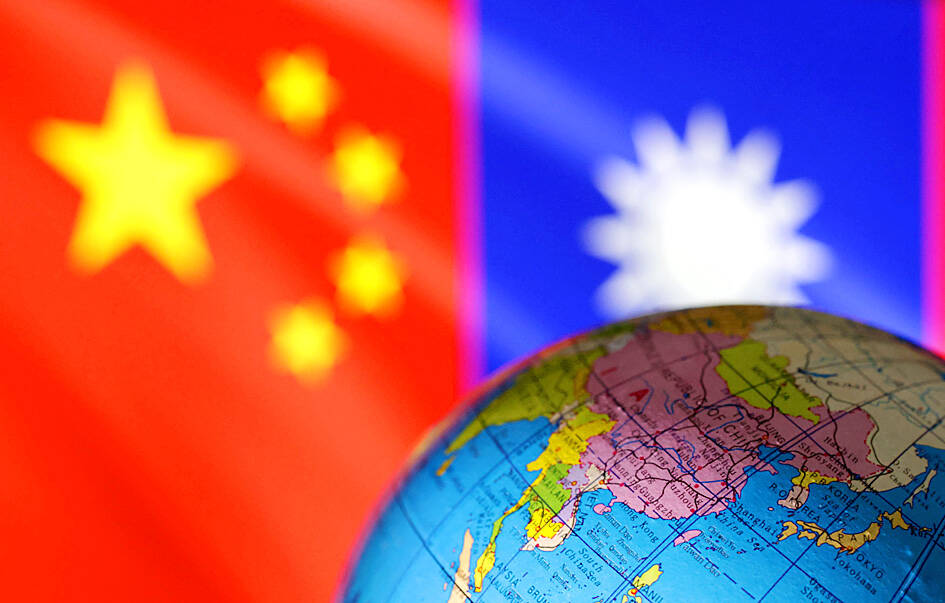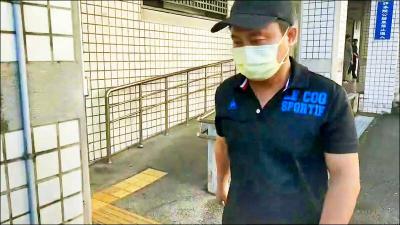Taiwan and the US are converging on views related to Taiwan’s defense needs, with both sides agreeing that asymmetric capabilities alone are not enough, a source said on Saturday.
The so-called “porcupine approach” to Taiwan’s defense that would seek to make an invasion a costly prospect for China is gradually being abandoned by both sides, in favor of the view that Taiwan should also enhance traditional combat capabilities, the source said.
That change in views has been fueled by China’s escalation of “gray zone” tactics, and has culminated in strengthened Taiwan-US defense cooperation, such as in the development of Taiwan’s first domestically produced submarine.

Photo: Reuters
“If our country and territorial waters are like a house with a yard, then we should be projecting our forces outward as if building a fence around that yard,” the source said. “The porcupine approach would have the enemies enter our yard before we even take action, drastically reducing the space and time for a response.”
Also, China would likely respond to a porcupine defense approach by attempting to blockade Taiwan and starve it of supplies, they said.
The navy should build larger vessels that would help it project its strength outward and keep enemy forces beyond Taiwan’s territorial waters, they added.
“If the Chinese People’s Liberation Army Navy is approaching Taiwan, we will not be able to repel them using smaller vessels, so we will need a larger fleet of medium and large ships,” the source said.
Penghu County would also be incorporated into defense strategies that would aim to push its zone of defense toward the enemy, the source said.
“In the future, we will develop a mixed approach to defense that will incorporate both basic combat capabilities and asymmetric capabilities,” they said.
The US’ concepts of asymmetrical warfare is rooted in monitoring conflicts between Israel and its neighbors, which has partly informed the change in Washington’s view on Taiwan’s defense., the source said, adding that aircraft carriers were not involved in those conflicts due to the geographical conditions compared with Taiwan.
A Taiwan-China conflict would largely be fought at sea, and China would continue to normalize encroachments leading up to such a conflict using “gray zone” tactics, so Taiwan would need large ships to respond to those threats, they said.
The first domestically made submarine launched last week is also an important result of the consensus between the countries, they said.
“The launch of Taiwan’s first domestically built submarine is testament to the country’s cooperation and consensus with the US on Taiwan’s defense. We must continue to strengthen that cooperation and improve our combat abilities,” the source said.

South Korean K-pop girl group Blackpink are to make Kaohsiung the first stop on their Asia tour when they perform at Kaohsiung National Stadium on Oct. 18 and 19, the event organizer said yesterday. The upcoming performances will also make Blackpink the first girl group ever to perform twice at the stadium. It will be the group’s third visit to Taiwan to stage a concert. The last time Blackpink held a concert in the city was in March 2023. Their first concert in Taiwan was on March 3, 2019, at NTSU Arena (Linkou Arena). The group’s 2022-2023 “Born Pink” tour set a

CPBL players, cheerleaders and officials pose at a news conference in Taipei yesterday announcing the upcoming All-Star Game. This year’s CPBL All-Star Weekend is to be held at the Taipei Dome on July 19 and 20.

The Taiwan High Court yesterday upheld a lower court’s decision that ruled in favor of former president Tsai Ing-wen (蔡英文) regarding the legitimacy of her doctoral degree. The issue surrounding Tsai’s academic credentials was raised by former political talk show host Dennis Peng (彭文正) in a Facebook post in June 2019, when Tsai was seeking re-election. Peng has repeatedly accused Tsai of never completing her doctoral dissertation to get a doctoral degree in law from the London School of Economics and Political Science (LSE) in 1984. He subsequently filed a declaratory action charging that

The Hualien Branch of the High Court today sentenced the main suspect in the 2021 fatal derailment of the Taroko Express to 12 years and six months in jail in the second trial of the suspect for his role in Taiwan’s deadliest train crash. Lee Yi-hsiang (李義祥), the driver of a crane truck that fell onto the tracks and which the the Taiwan Railways Administration's (TRA) train crashed into in an accident that killed 49 people and injured 200, was sentenced to seven years and 10 months in the first trial by the Hualien District Court in 2022. Hoa Van Hao, a